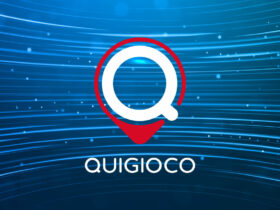Among the sectors that have benefited most from the introduction of the electronic signature and that would further benefit from its qualitative implementation, there is certainly the real estate market.
When we talk about electronic signature, net of the diffidence – mostly unjustified, almost always the result of a bad or partial knowledge of the subject – that many still may have on this tool, we refer to a telematic application useful in well-known areas. precise: tertiary services and entrepreneurship. But a tool like this, young and with still largely unexplored potential, could soon find new and profitable fields of application.
It is no coincidence, therefore, that the main hubs producing such electronic tools – such as Yousign, which holds the leadership of these products in Europe – are working to perfect and release new and increasingly advanced versions of the signature in a short time. electronics. The evolutions expected by consumers (at least those already convinced of the goodness of the product) obviously concern an ever greater level of safety combined with an increase in flexibility of use. As you can easily guess, combining the two is far from simple, but the technological evolution of the electronic signature seems to know no pauses, therefore it is reasonable to expect news in no time at all.
The electronic signature in the real estate sector
Among the sectors that have benefited most from the introduction of the electronic signature and that would further benefit from its qualitative implementation, there is certainly the real estate market. Fresh from a tragic year to say the least (a 2020 with a negative balance of 8.2% compared to the previous year, an apocalypse for a sector in which a tenth of a percentage point less is equivalent to a few dozen agencies that close and related jobs have disappeared), Italian real estate has had to deal with an economic, financial and above all social and anthropological landscape that has radically changed within a few months. 2019 was the year in which the resumption of real estate sales and rentals was unequivocally sanctioned. And 2020 itself started under the best auspices, with the first two months recording more than flattering performances. Since mid-March, everything has changed, and the operators in the sector have been overwhelmed by an avalanche: the people locked up in their homes, the impossibility of moving from their municipality, the closed offices (including some public offices), the ruinous fall of the main economic indicators and of people’s purchasing power. The pandemic immediately began to demand heavy duties from humanity (momentarily pretending to overlook the enormous sacrifice of lives), and from an economic point of view that of the house is one of the sectors that have suffered most from the onset of a scenario so unprecedented.
At a certain point, the urgency to restart the gears of the machine took over, but to favor the recovery of the market in conditions of persistent emergency it was necessary to deploy all the means capable of facilitating remote work. The electronic signature – obviously not alone, but together with other, no less useful, devices – was among the architects of a real palingenesis. And if, as widely expected, 2021 is about to close in the name of an extremely encouraging trend, it is above all due to these tools that have made many procedures more agile and streamlined, at the same time evading, on many occasions, the obligation the presence of the contracting parties in the same physical place.















Leave a Reply
View Comments